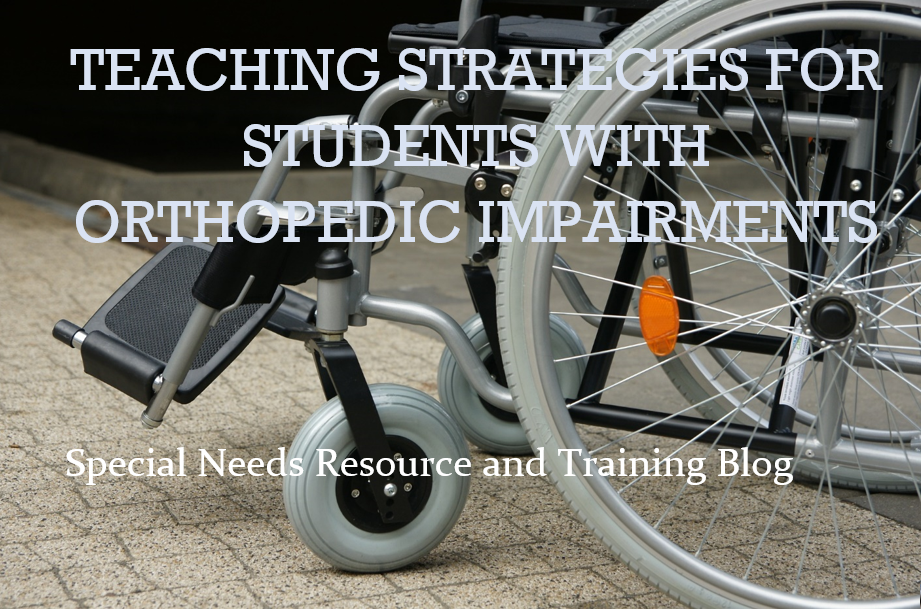Teaching Strategies for Students with Orthopedic Impairments
The definition of orthopedic impairment under IDEA means a severe orthopedic impairment that adversely affects a child’s education performance. Causes include:
- genetic
- disease
- injury
- birth trauma
- burns
- fractures
- cerebral palsy amputation
There are 3 classifications that an orthopedic impairment can fall under:
- Neuromotor impairment, this would include cerebral palsy, spinal cord injuries, spina bifida, and seizure disorders
- Degenerative Disease such as muscular dystrophy and Ehlers-Danlos Syndrome
- Musculoskeletal Disorders including scoliosis and deformed limbs.
Students with orthopedic impairments often qualify for therapy including physical and occupational therapy. assistive technology should be included for accommodating the students needs.
The following links provide resources on teaching assessment, modifications, and teaching information.
Orthopedic impairment: A guide for parents and teachers
Orthopedic impairment characteristics: Classroom modification and assistive technology
Orthopedic impairment and special needs students
Orthopedic impairment disability
Teaching strategies for mobility impaired students
Teaching strategies for orthopedic impairment
Teaching students with disabilities: Orthopedic impairment
Teaching students with orthopedic impairment
Understanding individuals with physical, health, and multiple disabilities


